When you’re a member of the snobbish Wargame Reviewer’s Guild, heaping praise on a title that doesn’t model line-of-sight and battlefield fog of war, and treats beverages such as tea and coffee as potential battle winners, isn’t without risk. It can prompt whispering in the Guild mess, anonymous letters to the Committee, even expulsion. Let them mutter, plot, and banish, I say. Master of Command is too good not to recommend.

Meaningless rivers and lakes, almost no acknowledgement of friendly fire, artillery batteries that can see and shoot through hills and woods, foes that seem largely oblivious to terrain and seldom use any formation other than ‘line’… at the tactical level MoC currently has some Potsdam Giant-sized shortcomings. This time last week I was concerned these realism issues would prove corrosive and distracting. I was worried my early enthusiasm for Armchair History Interactive’s £25 Total War-style offering would dwindle over time in the face of so much WTF.
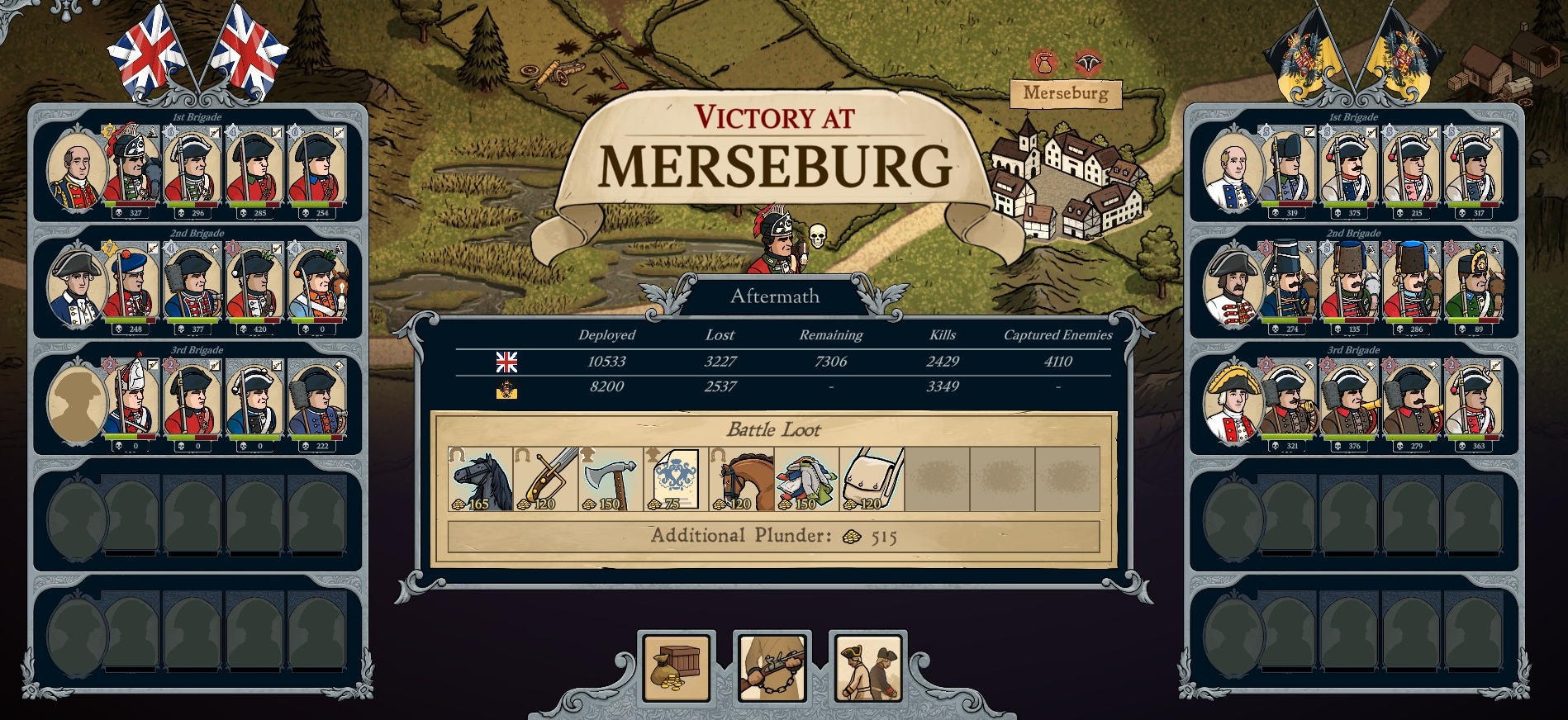
If the follow-up to the disappointing Fire & Maneuver had been purely tactical – if it hadn’t shipped with arguably the genre’s most colourful, imaginative, and choice-riddled campaign system – then, yes, I probably would have spent much of this review grumbling about the myriad ways in which MoC is inferior to the likes of Sid Meier’s Gettysburg and Ultimate General: Civil War.
True, the griping would have been balanced by AI, interface, and graphics compliments.

Maybe enemy armies don’t utilise advantageous terrain as well as they might. Certainly they don’t sit tight often enough thereby forcing players to quit cover-rich deployment zones. Put these questionable habits to one side however, and the game’s silicon COs generally command competently.
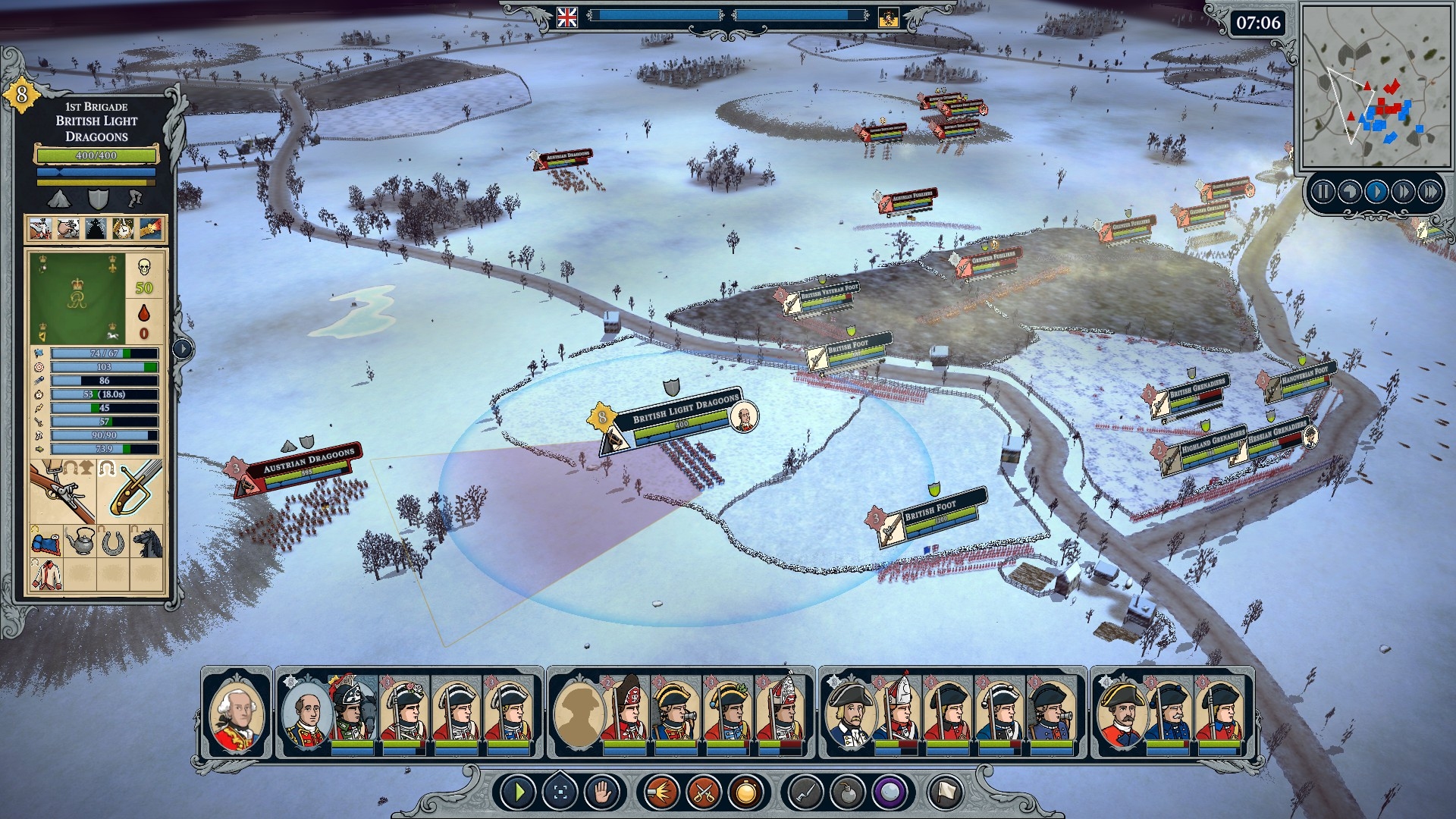
Better than competent, the CPU’s use of mounted units is genuinely impressive at times. Fail to keep an eye on your flanks and it probably won’t be long before knots of hostile cavalry are chewing holes in them then running amok in your rear. Fail to employ your own gallopers and commanders sagely, and the twin lines of volley-firing infantry that usually dominate the centre of a MoC scrap may not disintegrate in a player-pleasing manner.
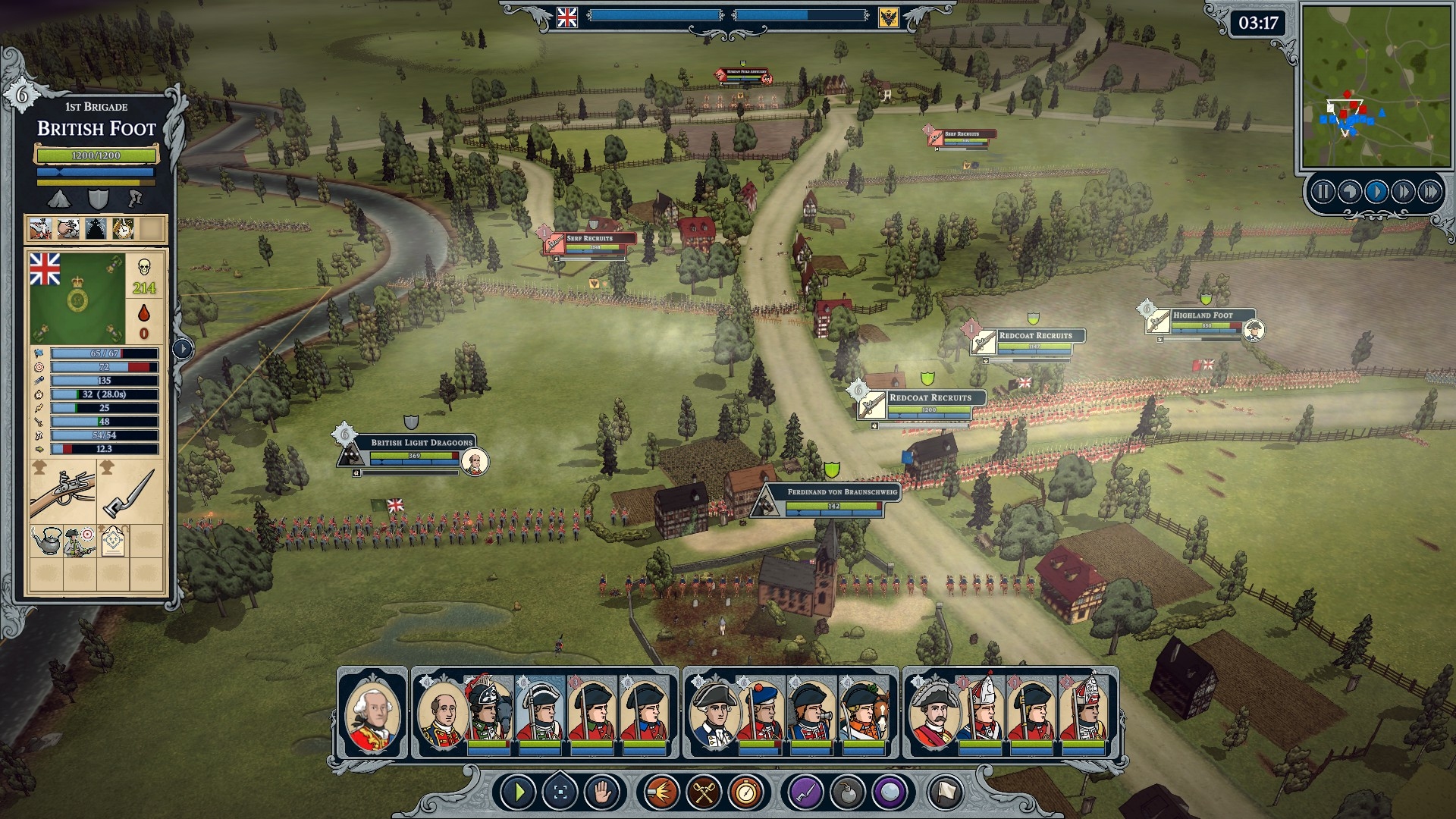
I’d argue Griffin Johnsen & Co. judge workload and battle pacing beautifully. Morale isn’t so fragile and units so swift that things can go south in seconds, but the action canters along fast enough to ensure you can, if you wish, squeeze several sizeable engagements into a single lunch hour.

Bayonet toggling, fire methodology (volley or free), ammo selection, grenade usage… although player influence extends beyond unit positioning, formation selection, and charge timing, there isn’t such a plethora of critical, manually-triggered unit abilities that you find yourself reaching for the pause or half-speed button every few seconds.
And I’m struggling to think of a wargame GUI that displays as much useful information as attractively, logically, and legibly as this one. If the currently selected unit was a tad more obvious on the field and in the unit monitor, and unit healthbars didn’t overlap and block each other occasionally, the screen furniture would be nigh-on perfect.

The fact the Steam forum isn’t teeming with graphics gripes at the moment shows most strategicians are prepared to do without fancy shadows, rustling trees, and lovingly rendered facial and agricultural stubble. Even if it was possible to zoom closer to the action than this ^ and fully rotate the camera* relatively simple soldier models and animations, and advancing units that ghost through buildings and trees as if they’re not there, would discourage screenshot sallies.
* Weirdly, the camera will only pivot about thirty degrees to left and right.
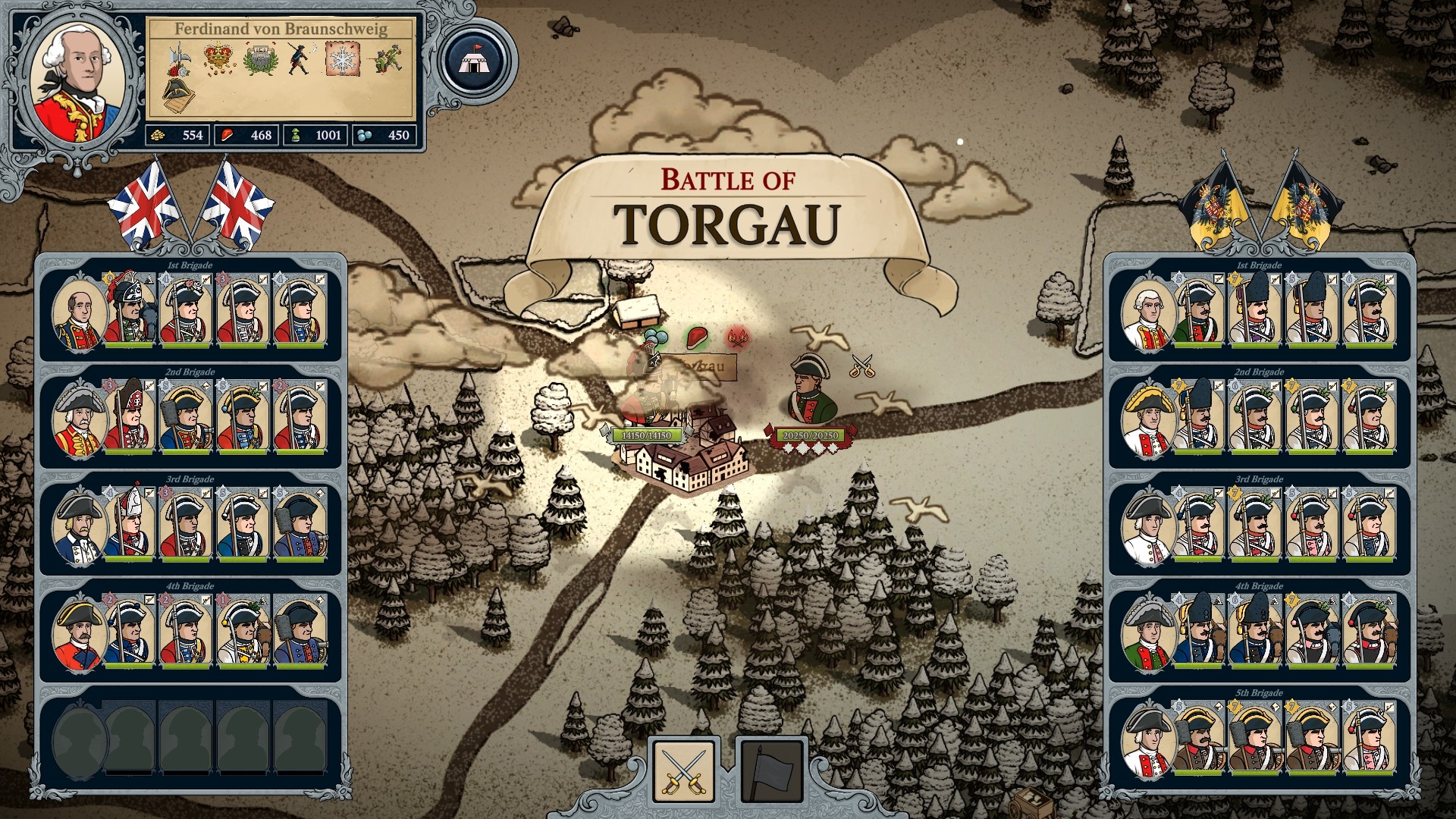
On the messageboards, balance and difficulty are far hotter spuds than the comparatively crude battlefield visuals. That’s not a big surprise considering progress and, ultimately, victory in MoC’s commendably colourful, unusually organic campaigns is dependent on beating the formidable HQ armies that appear at the close of each of a campaign’s three ‘acts’. Said armies – level bosses in all but name – can’t be defeated with brilliant tactics alone. To have any chance of triumphing you must take to the field with an army sufficiently huge, experienced, and well equipped to compete.
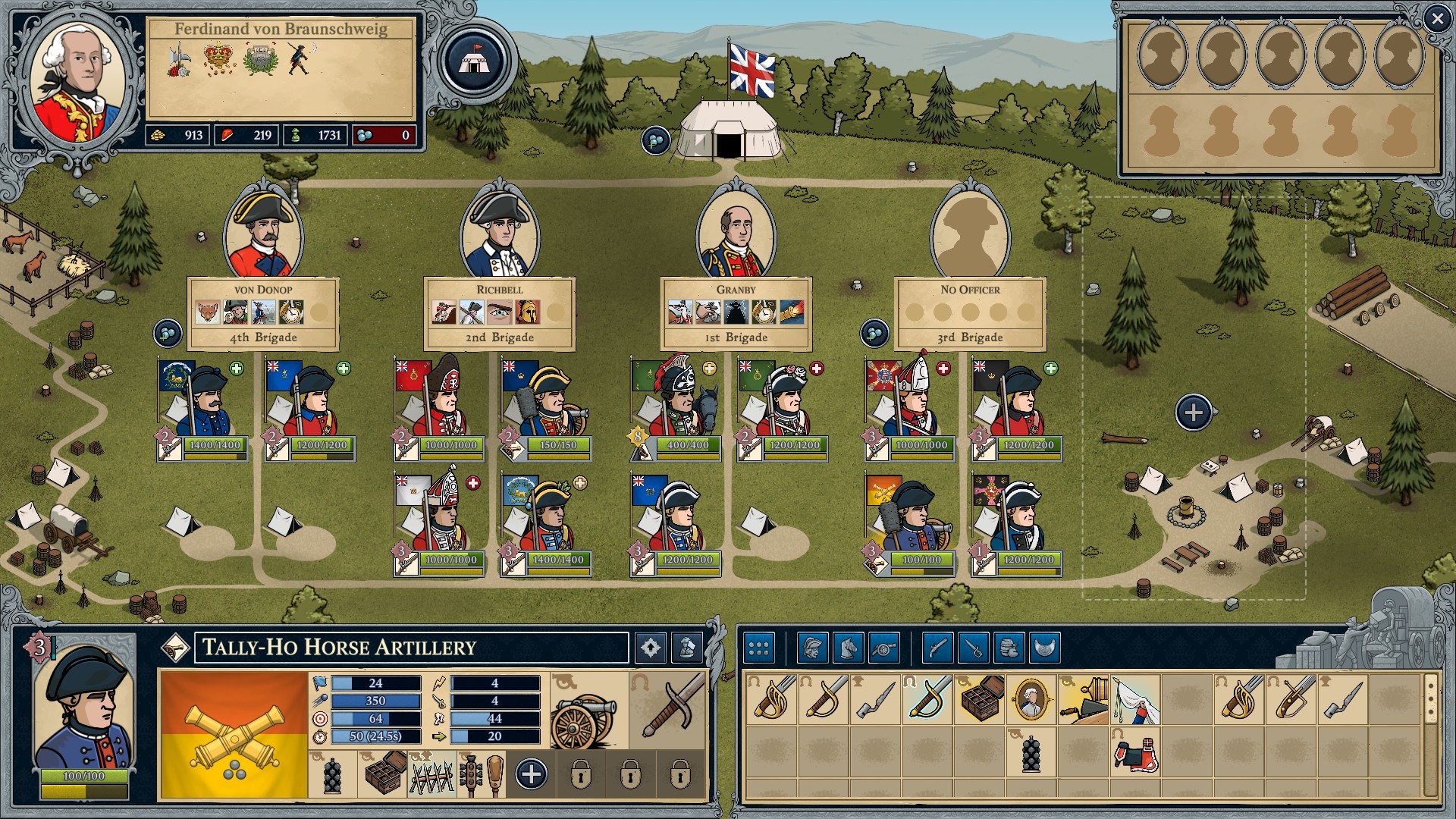
Old-school computer wargamers may shudder when they read that thoughtful army cultivation and customisation is just as important as thoughtful generalship in this diversion, but take it from me – someone who usually sighs when asked to choose, say, a regiment’s rifle type or officer abilities – MoC manages to make military housekeeping fun.

Scavenged from battlefields after victories, purchased from traders, or earned through the campaign’s myriad IF-style encounters and dilemmas, stat-boosting equipment, specialist personnel, and mascots, must be manually assigned to individual units to benefit your force.

The variety of equippables and the fact kit and specialists often comes with maluses as well as bonuses means it pays to ponder before issuing impedimenta. It’s possible to create dramatic differences between on-the-face-of-it identical units through thoughtful inventory customisation. Using items like greatcoats, entrenching tools, and chevaux de frise you might turn one of your regiments into a doughty defensive anvil, while transforming another into a hard and fast offensive hammer with help of stuff like half-gaiters, Jönköping muskets, and a treatise by Folard.
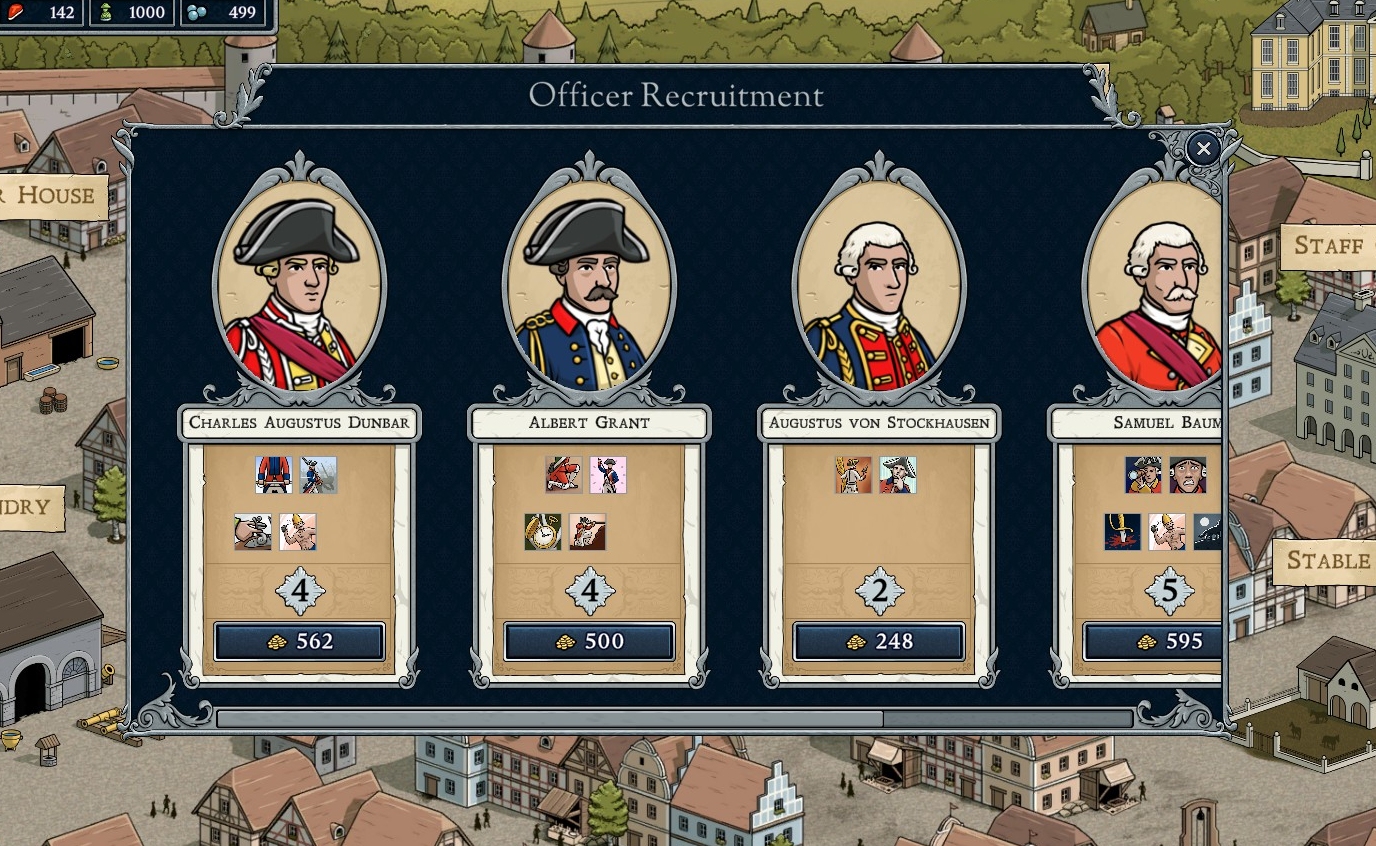
As you can also customise through officer* choice, and via bespoke flags, uniforms, and names, by the end of a campaign it’s almost inevitable your army will have developed a character all of its own and you’ll have grown attached to particular regiments.
* Officers possess traits, good and bad, and can perish in battle if the units they are attached are used aggressively.

Besides manpower moulding and clash choreographing, campaigning mostly consists of moving an army bust around a randomly generated 2D strat map sprinkled with tempting unknowns. Do you want to confront that roaming patrol army, sack that town, or attempt to capture that fort next? Is that camp, convoy, or old battleground, worth a visit? Maybe now would be a good time to head to a settlement to trade and recruit, or pitch camp and drill some faux veterancy into your greenhorns?
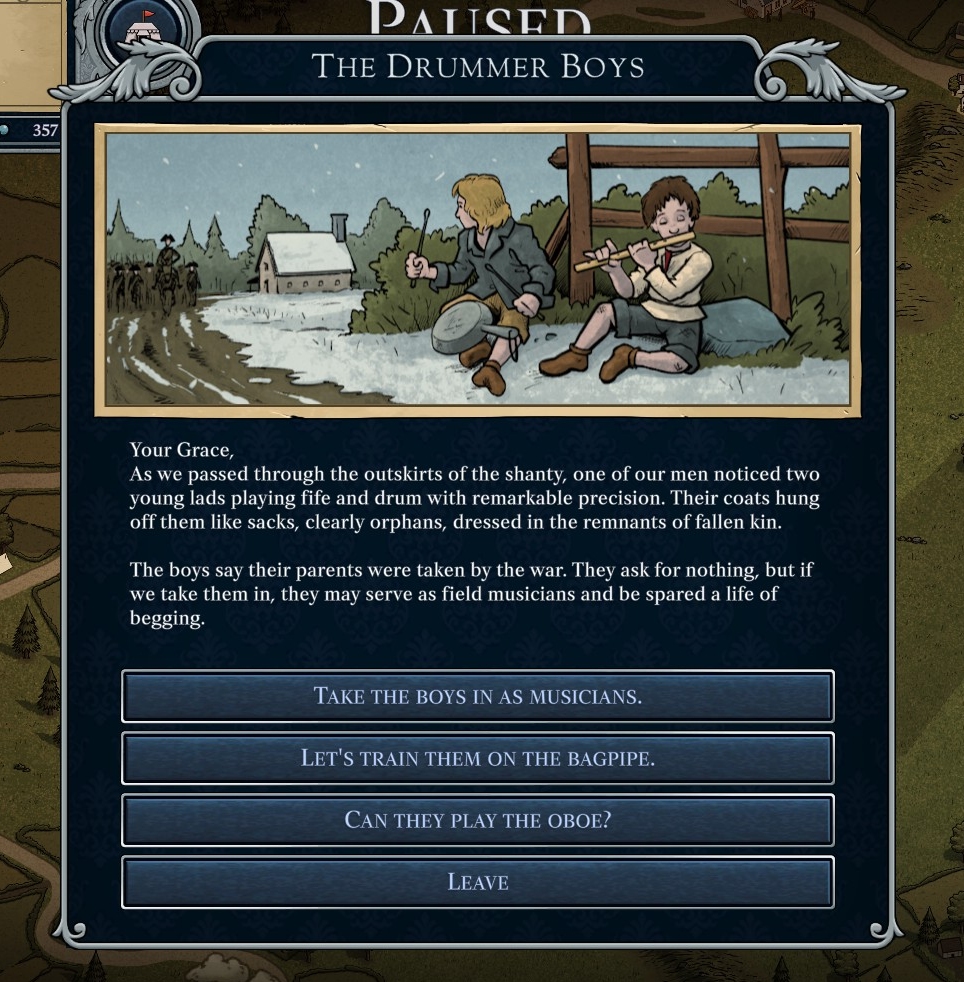
The prospect of winter and an inevitable clash with a large, experienced HQ army* adds a sense of urgency and focus to the rambling. Last night my latest attempt to best Act II ended in defeat partly, I suspect, because of my reluctance to pillage. If I’d torched, razed, and robbed more energetically I would have fulfilled one of the Act’s pair of optional goals, earning myself a free artillery regiment that might have made a telling contribution in the final clash.
* Or armies! I’ve not made it to Act III of a campaign yet, but I hear it might conclude with a pair of bosses rather than one.
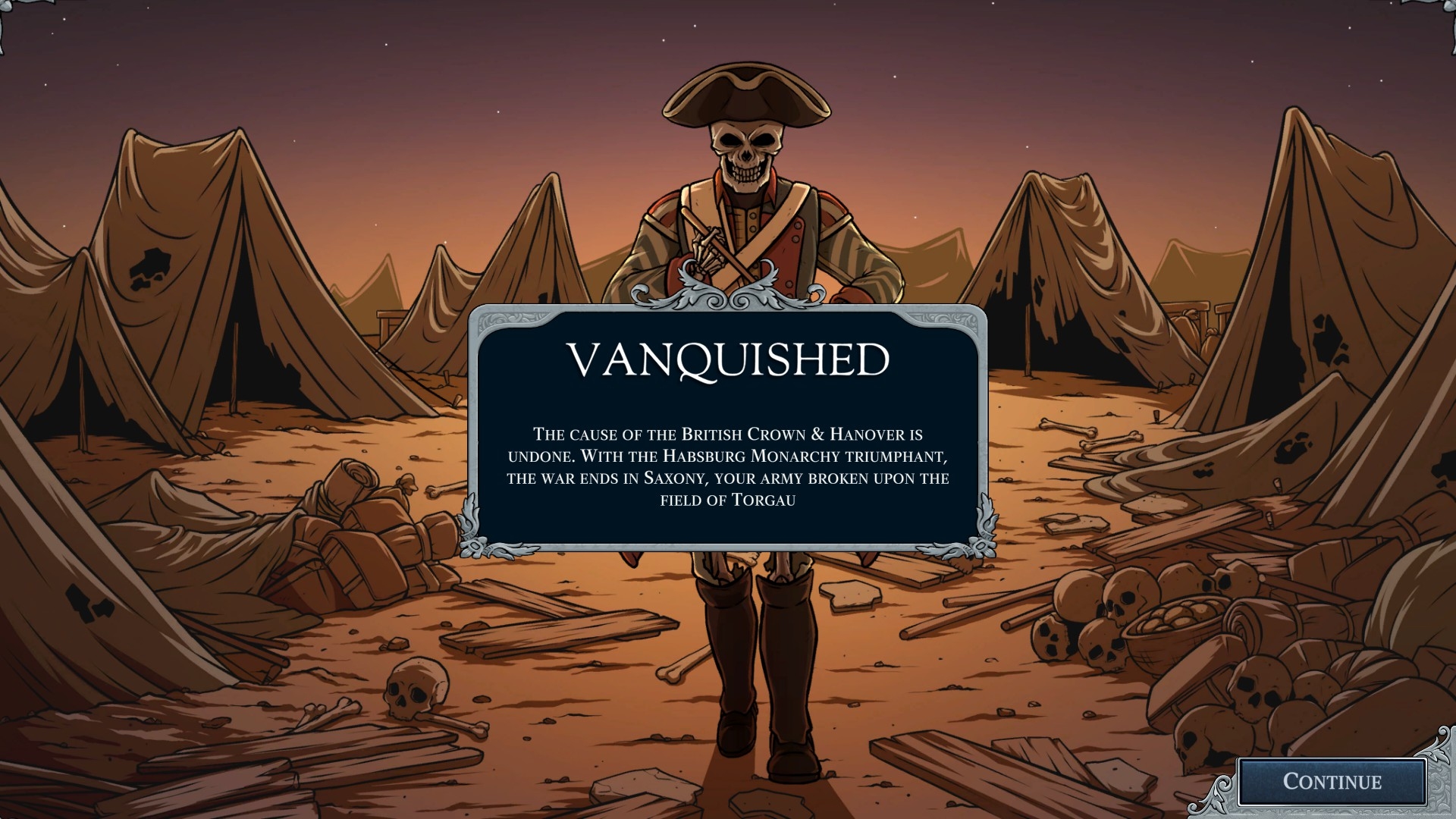
My failure at Torgau meant I went to bed somewhat downcast but it hasn’t changed the way I think about the marvellous Master of Command. At a sabre stroke, Armchair History Interactive has made the campaign systems in most other wargames seem awfully anemic. If they can add a tad more realism to Master of Command’s flawed but serviceable tactical layer in coming months, there’s a good chance, this time next year THC’s ‘Best Introductory Wargame’ won’t be Battle Academy 2.

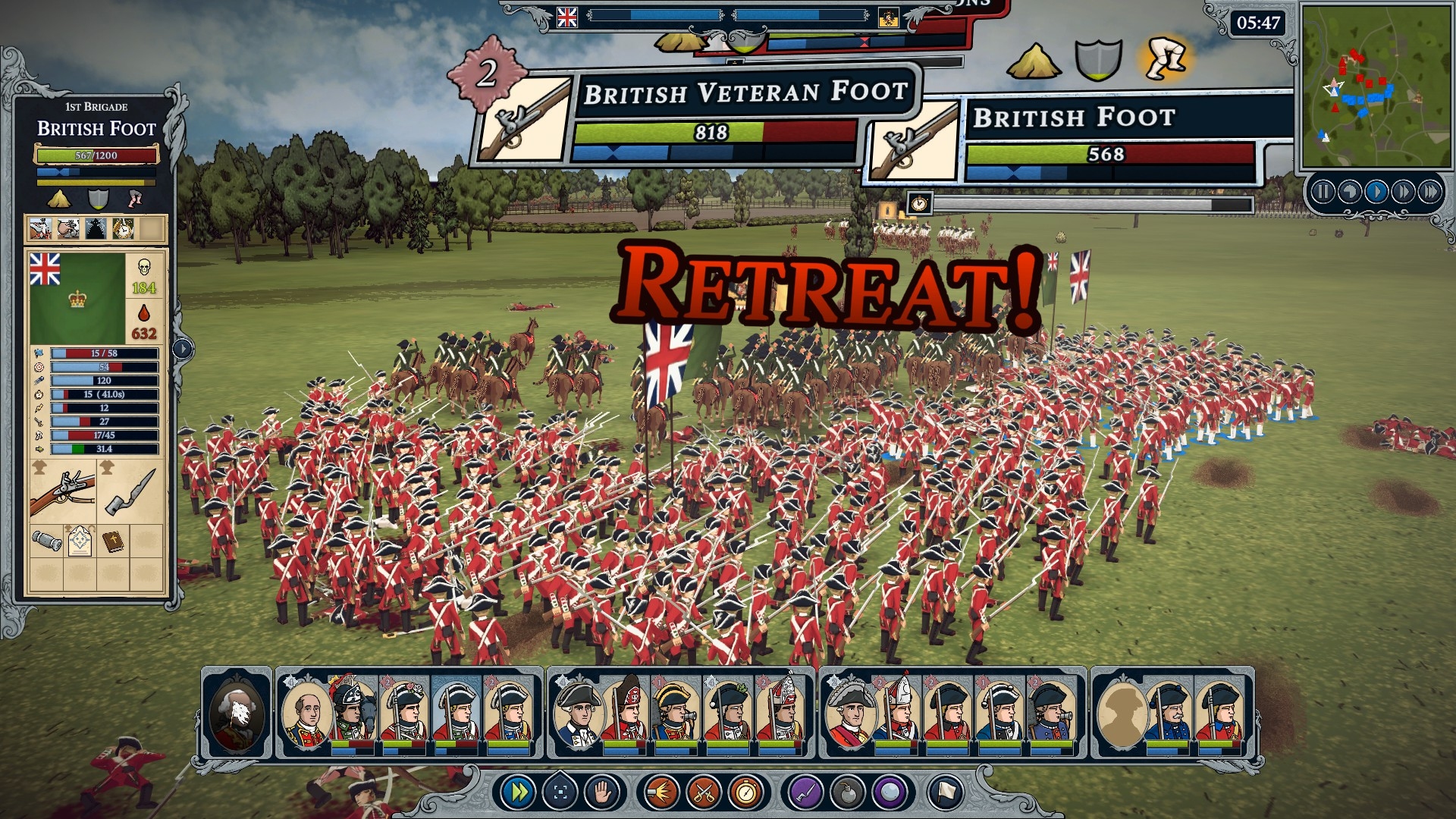
Great to hear that those devs have had such a successful comeback after there debut attempt.